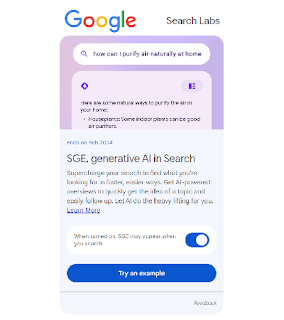Why No One Believed in AI a Few Years Ago: AI Scepticism and AI Disbelief
Article Summary:
AI has come a long way in a relatively short amount of time. However, just a few years ago, many people were sceptical about the potential of AI. This article explores the reasons behind AI scepticism and disbelief, including past failures, unrealistic expectations, and concerns about job displacement. It also examines how AI has evolved and how it is transforming various industries today.
AI Scepticism and AI disbelief were common just a few years ago. People were unsure about the capabilities of artificial intelligence and doubted its potential to change the world. Fast forward to today, and AI is everywhere. It's in our smartphones, smartwatches, our homes, and our workplaces. So, what changed? Why did no one believe in AI a few years ago, and what made people change their minds?
The History of AI Scepticism
AI scepticism has been
present for decades, even as technology has continued to develop and
improve. This scepticism can be traced back to the early days of AI research when many believed that the technology was too complex and too far-fetched to
ever be a reality.
In the 1960s and 70s, AI
was seen as a promising field with the potential to revolutionize industries
such as healthcare, finance, and transportation. However, researchers and
developers quickly realized that creating intelligent machines was much more
difficult than they had anticipated.
One of the biggest
obstacles in the early days of AI was the lack of computing power. Computers
simply were not powerful enough to process the vast amounts of data required
for AI algorithms. Additionally, early AI systems were programmed using if-then
statements, which limited their ability to learn and adapt to new situations.
As a result of these
limitations, many in the tech industry and beyond became sceptical of AI's
potential. The media, in particular, was quick to jump on any failures or
setbacks in AI research, painting the field as a pipe dream that would never
become a reality.
This scepticism continued
throughout the 80s and 90s, as AI research shifted from rule-based systems to
machine learning and neural networks. While these new approaches showed
promise, they were still limited by the lack of computing power and data
availability.
It wasn't until the late
2000s that AI began to gain widespread acceptance as a viable technology. This
was due in large part to the rise of big data, which allowed AI systems to
access the vast amounts of data required to learn and improve. Additionally,
advances in computing power and cloud computing made it possible to process
this data in real-time.
Today, AI is seen as one
of the most promising technologies of our time, with applications in everything
from self-driving cars to medical diagnosis. However, the long history of AI
scepticism serves as a reminder of the challenges that the field has faced and
the perseverance required to overcome them.
AI Disbelief in the Modern Era
Artificial intelligence
has come a long way since its inception, but even today there are still many
skeptics and naysayers who do not believe in its potential. In the modern era,
AI has become increasingly sophisticated, with advanced algorithms and machine
learning techniques allowing it to perform tasks that were once thought to be
impossible. However, despite the significant advancements made in recent years,
there are still those who doubt the technology's ability to truly revolutionize
the world.
One of the main reasons
for AI disbelief in the modern era is the fear that it will take over jobs and
lead to mass unemployment. This fear is not entirely unfounded, as AI has
already started to replace certain types of jobs, such as those involving
manual labor or repetitive tasks. However, it is important to note that AI also
creates new opportunities for employment, particularly in fields such as data
analysis, programming, and AI management.
Another reason for AI
disbelief is the lack of transparency and understanding of how AI
algorithms work. Many people feel uneasy about the idea of machines making
decisions without human oversight, and the concept of a "black box"
algorithm can be daunting. However, it is worth noting that efforts are being
made to increase transparency and ensure that AI algorithms are more
explainable and interpretable.
Furthermore, there are
concerns about the potential biases and discrimination that AI systems may exhibit.
If AI is trained on biased data, it may perpetuate and amplify those biases,
leading to unfair or discriminatory outcomes. This is a legitimate concern, and
one that is being addressed through initiatives such as ethical AI development
and bias testing.
Despite these concerns,
it is important to recognize the many benefits that AI has to offer. From
improving medical diagnoses to revolutionizing transportation systems, AI has
the potential to make our lives better in countless ways. It is up to us to
ensure that AI is developed and deployed responsibly, with an eye towards
minimizing its potential negative impacts and maximizing its benefits.
To sum up, AI disbelief
is a real and persistent issue in the modern era. However, by addressing concerns
around job displacement, transparency, bias, and discrimination, we can work
towards building a more informed and supportive public discourse around this
groundbreaking technology. Ultimately, AI has the potential to revolutionize
our world, and we should not let unfounded fears and doubts stand in the way of
progress.
The Role of Deep Learning
Deep learning has been
one of the driving forces behind the resurgence of artificial intelligence (AI)
in recent years. This technology has revolutionized the way machines can
process and analyze vast amounts of data, enabling them to recognize patterns,
make predictions, and perform a range of tasks with remarkable accuracy. In
this article, we'll explore the role of deep learning in the resurgence of AI.
Deep learning is a branch of artificial intelligence (AI), that falls under the broader category of machine learning. It involves training
algorithms to recognize patterns in data by processing large amounts of input
data through multiple layers of neural networks. These networks are designed to
simulate the way the human brain works, with each layer building on the
previous one to refine and improve the accuracy of the results.
Deep learning offers a
crucial benefit with its capability to handle and examine unstructured data,
including speech, images, and natural language. This has led to significant
advances in areas such as computer vision, speech recognition, and language
translation. For example, deep learning algorithms are now capable of
recognizing objects and faces in images with an accuracy that rivals human
performance. They can also transcribe speech and translate between languages
with increasing accuracy.
Another important aspect
of deep learning is its ability to learn and adapt to new data. This means that
as more data is fed into the system, the algorithms become more accurate and
effective at their tasks. This has enabled deep learning to be used in a range
of applications, from self-driving cars to medical diagnosis and drug
discovery.
The resurgence of AI has
been driven in part by the availability of large amounts of data and advances
in computing power, which have enabled the training of complex deep learning
models. In addition, the development of open-source frameworks such as
TensorFlow and PyTorch has made it easier for researchers and developers to
build and deploy deep learning models.
Despite the many
successes of deep learning in AI, there are also challenges and limitations to
this technology. One of the biggest challenges is the need for large amounts of
data to train the algorithms effectively. This can be a barrier to entry for smaller
organizations or those without access to large data sets. In addition, deep
learning models can be computationally intensive, requiring significant
computing power and energy.
In summary, deep learning
has played a significant role in the resurgence of AI in recent years. Its
ability to process and analyze unstructured data has led to major advances in
areas such as computer vision and natural language processing. However, there
are also challenges and limitations to this technology that must be addressed
as it continues to evolve and shape the future of AI.
The Future of AI
So, what does the future hold for AI? The technology is still in its infancy, and there is no telling
what breakthroughs may be just around the corner. However, it's clear that AI
is here to stay, and it will continue to transform many industries in the
coming years.
AI is expected to make a
notable contribution in the field of healthcare. With the ability to analyze
vast amounts of medical data, AI has the potential to help doctors diagnose
diseases more quickly and accurately.
AI is also likely to play
a major role in transportation. Self-driving cars are already a reality, and
they could soon be joined by autonomous trucks and other vehicles. This
technology has the potential to make our roads safer and more efficient,
reducing congestion and saving lives.
Conclusion




Comments
Post a Comment